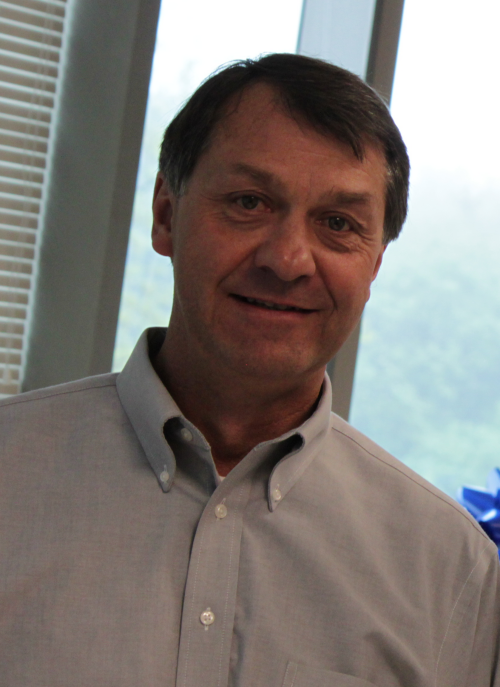 |
| Stephen Doxsey, PhD |
A UMass Medical School research team has found that a protein-packed ring known as the midbody, which is the final gatekeeper of cell division, plays an important role in the ability of stem cells to remain capable of differentiating into different types of cells and of cancer cells to rage out of control and create tumors.
The team, led by Stephen J. Doxsey, PhD, professor of molecular medicine, biochemistry & molecular pharmacology and cell biology, working in collaboration with researchers at Children’s Hospital in Boston and Harvard Medical School, reported their findings in a paper published Sunday, Sept. 11, online by the journal Nature Cell Biology in advance of print.
The study focused on the fate of the midbody after cells divide. Dr. Doxsey’s team found that in all types of cells they examined, the midbody is selectively inherited by the daughter cell with the older centrosome (an organelle involved in cell division.) In mature cells, like epithelial cells, the midbody is quickly degraded after cell division is completed. In stem cells and certain cancer cells, however, the midbody persists.
The team found that after several divisions, midbodies began to accumulate in those cells with a stem-cell profile, meaning they were not differentiating into a specific tissue type. The midbodies also remained intact and began to accumulate in a subpopulation of cancer cells that are most aggressive in forming tumors—often called cancer stem cells. (Doxsey’s team named the midbodies that accumulate in the cancer and stem cells “midbody derivatives.”)
In the current study, researchers observed that when stem cells began to differentiate, the level of midbody derivatives present decreased significantly. Conversely, when midbody derivatives were purposely increased in cells that were being reprogrammed to act like stem cells, reprogramming activity was significantly increased. Furthermore, in cancer cells, midbody derivatives were seen accumulating in vastly larger numbers in the most aggressive tumor cells.
“It is thus tempting to propose that midbody derivatives may serve as scaffolds for organizing cell-fate determinants,” the authors wrote. “Equally intriguing is the observation that essentially all cancer cells examined contain midbody derivative accumulating subpopulations, making this a common intrinsic property of both stem cells and cancer cells.”
This new data yields an important question: can the reduction of midbody derivatives in cancer stem cells block, or reduce, the growth of tumors? “The data clearly show that midbody derivatives play a role in putative cancer stem cells,” Doxsey said. “We need to know precisely what they are doing, and we are exploring that now in the lab. This could be an interesting therapeutic target, but we need to better understand the mechanisms involved.”
The midbody is a singular organelle involved in abscission, which is the final moment when two cells divide. Before division, the prospective daughter cells are joined by an increasingly thin stretch of material called the intracellular bridge. The midbody sits at the center of that bridge, tethered to filaments that extend back into each nascent daughter cell.
In earlier work, the Doxsey lab showed that just before abscission occurs, one of the daughters sends a rush of vesicles down the intracellular bridge. These vesicles, which are small sacks of fluid not unlike water balloons, build up on one side of the midbody, then fuse together or burst to break the bonds and achieve final separation.
In 2005, Doxsey’s lab first described new properties of the midbody that defined new functional aspects of cell division. Prior to that, the midbody was believed to have little, if any functional role in cell division.
In their conclusion of the current paper, the authors wrote, “[O]ur results demonstrate that midbody derivatives are more than the remnants of [cell division]. The shared ability to accumulate midbody derivatives by stem cells and putative cancer stem cells, and their striking impact on cellular phenotypes, indicate that midbody derivatives carry out important functions that remain to be discovered.”
Related link:
Full paper: “Midbody accumulation through evasion of autophagy contributes to cellular reprogramming and tumorigencity”
|
|